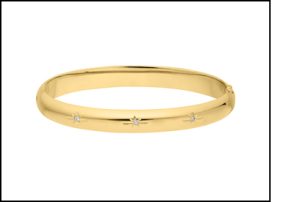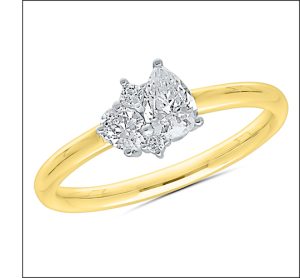Hot Looks for 2025
As the end of 2024 draws near, many are thinking ahead to next year’s hottest looks. To make next year’s must-haves, manufacturers consider current color trends, metal prices, and other aspects of best sellers to develop a compelling future-products plan.
Given that diamond prices (and desire) are still waning, colored gemstones have quickly become a preferred category. Shefi Diamonds will continue making its covetable lines, featuring them in flexible styles, textured jewels, and with enamel and colored diamonds. These, along with lightweight gold jewelry, “will be key materials for next year’s business,” says Surbhi Jain, marketing director. “We are definitely moving forward with multicolor sapphire jewelry as well.”
Royal Chain Group is incorporating more beaded looks in chain and in fashion-forward designs as well as electroform earrings due to the high price of gold. Gold costs are a source of concern to many as modest styles continue to climb in cost but not weight or embellishments—a reality that many are forced to confront.
Roger Forman, one of the owners of Marathon Company, maintains that merchants should consider 14k gold-filled jewelry. Marathon makes Kiddie Kraft jewelry for children as well as styles for adults.
“[Gold fill] meets a price-point need that solid gold jewelry simply cannot,” he insists. “Plus, 14k gold-filled jewelry has been around for centuries and is a great substitute for solid gold.” Marathon also makes 14k gold and sterling silver jewelry.
The firm has been making 14k gold-filled jewelry since 1897 in its factory in Attleboro, Mass. Forman explains that there are some important distinctions to make between gold-filled jewelry and gold-plate or vermeil jewelry. Namely, gold fill has more gold in it.
A USA industry standard legally requires 1/20th, or 5% pure gold by weight in 14k gold fill.
“It’s a strictly regulated process that involves pressure bonding multiple layers of solid 14k gold with extreme heat over a core of high-quality jeweler’s brass, resulting in a durable, quality real gold product,” he says.
While the total weight of the material is just 5% 14k gold, all the gold is on the surface, creating a durable long-lasting layer, unlike gold plating, which is more a film than a tangible layer and is often measured in mils (or millionths of an inch). Also, the standards for 14k gold fill are strictly regulated, while the standards for gold plate “encompass a broad range of thicknesses, so you can’t be sure how much gold is in the plated layer,” he continues. “[Gold fill] will not flake off and is a great option for people with sensitive skin.”
Alternatively, ODI is banking on platinum and mined diamonds to move in 2025.
“Both are the epitome of beauty, rarity, and value,” says Valerie Fletcher, vice president of design and product development. “You can mimic them with lab-grown stones and rhodium plating, but for important moments and milestones, these are the real deal.”
ODI has certainly not stopped offering karat gold—“It continues to be very strong,” she says—but is offering petite hoop earrings, dainty rings, and delicate necklaces in gold (and platinum). She calls these looks “affordable luxury.”
“Consumers are more price conscious, but they still want to celebrate achievements and occasions with something special,” she adds.
And while products from The Kingswood Company aren’t affected by gemstone and metals trends, the firm’s vice president of sales and marketing knows that their jewelry cleaners are an equally valuable part of every store’s inventory mix.
“Jewelry brands do not need to price their care products to compete with big box retailers,” explains Pam Waclawski. “Our jewelry retailers want to offer elevated products at higher price points, which luxurious and custom products support.”











